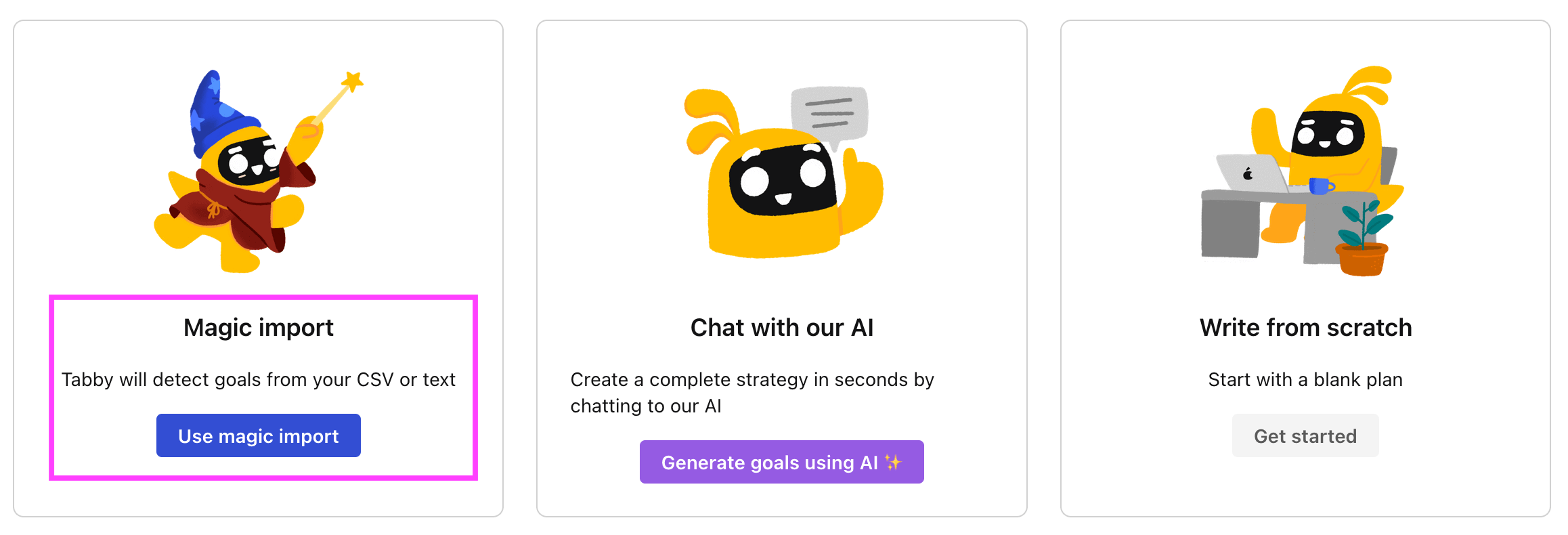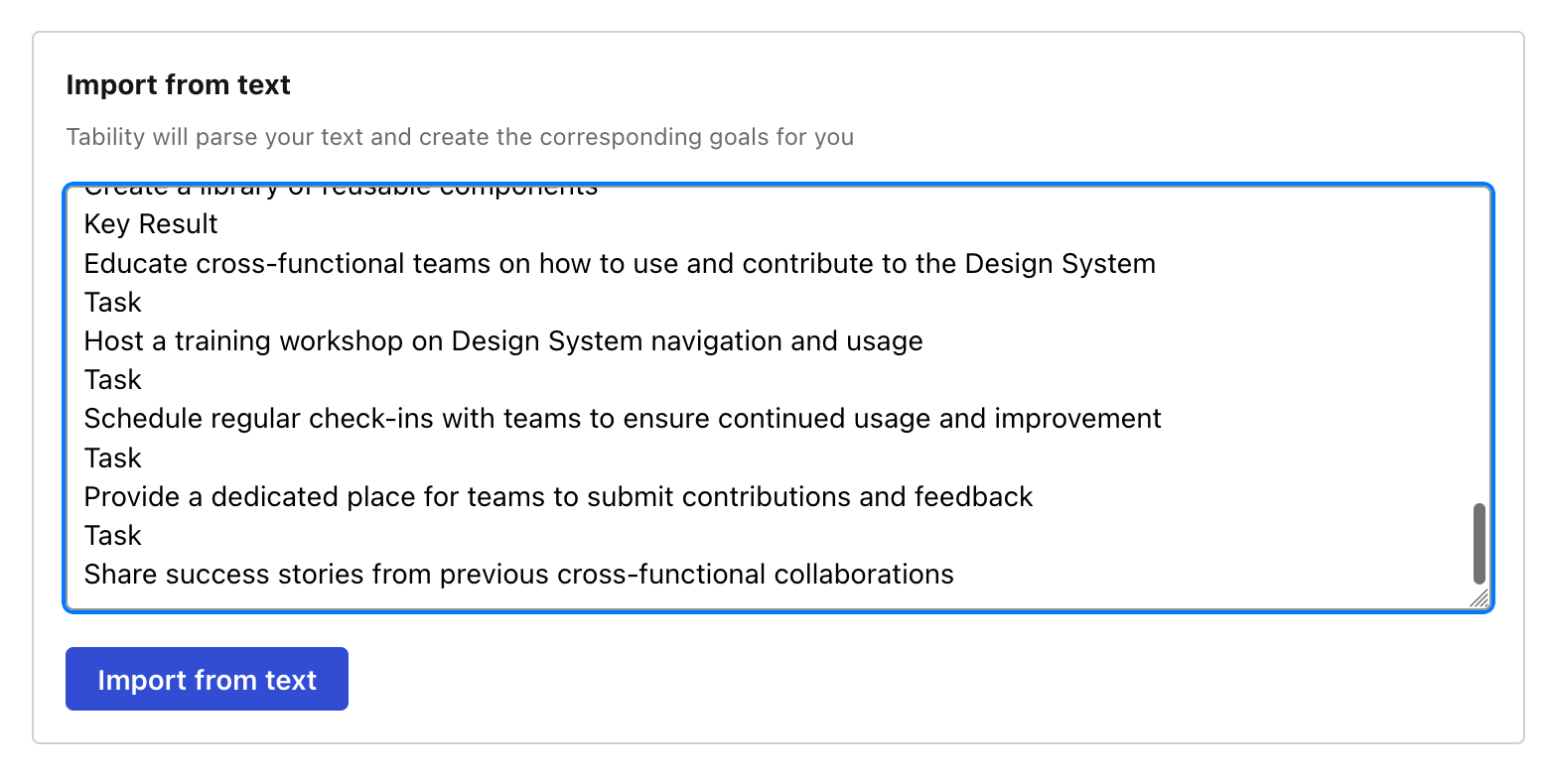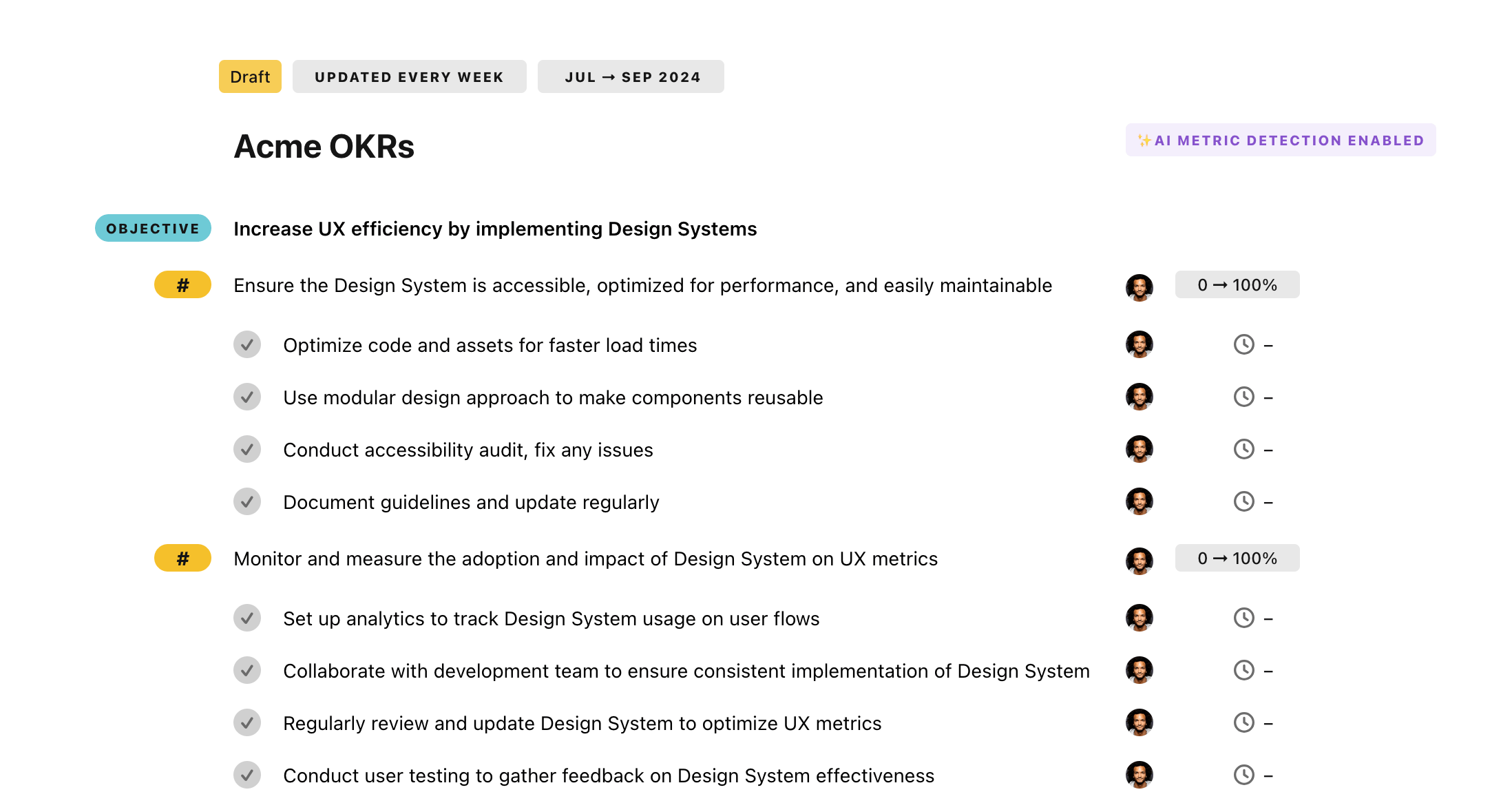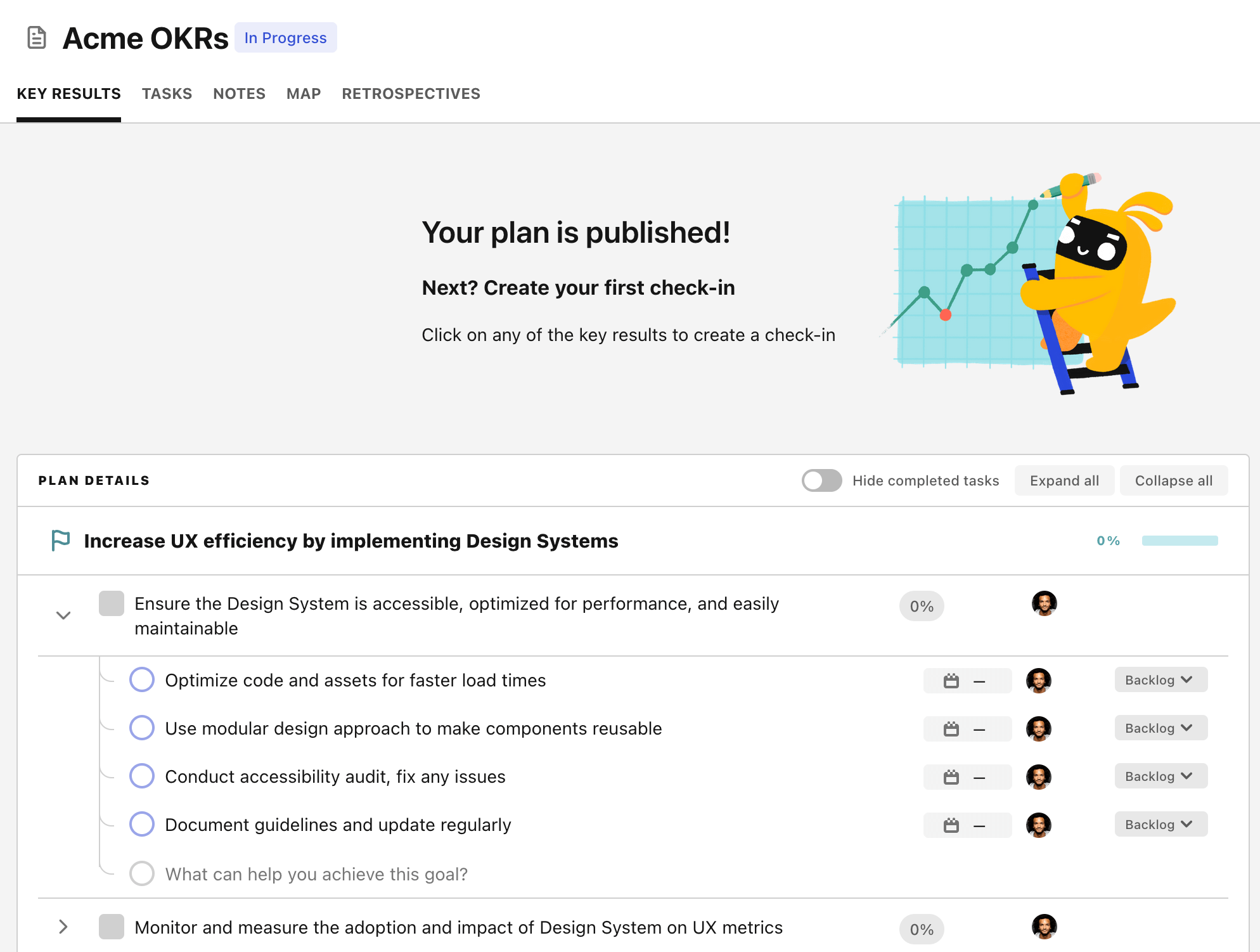OKR template to enhance company security standards to safeguard against potential threats
Your OKR template
The second objective is to implement a comprehensive cybersecurity training program for all employees, aiming for 100% completion. This will involve creating an online platform for easy access to resources, scheduling regular training sessions, assigning experienced trainers, and customizing the curriculum to match different roles.
The OKR further aims to trim down the average response time to security incidents by 20%. Striving for more streamlined and efficient workflows, clear escalation processes, regular readiness exercises, and automated monitoring systems will facilitate this aim.
Lastly, increasing the frequency of security audits to at least a quarterly basis forms the final goal. This objective would require assigning dedicated personnel, developing standard reporting formats, maintaining regular communication channels, and constantly reviewing and updating audit checklists.
ObjectiveEnhance company security standards to safeguard against potential threats
KRAchieve a 100% completion rate of all recommended security updates and patches
Conduct routine audits to ensure all devices and systems have the latest security patches
Provide ongoing training and awareness programs to educate employees on the importance of installing security updates
Implement an automated system to regularly scan and identify available security updates
Establish a policy for prompt installation and deployment of all identified security updates
KRImplement a comprehensive training program on cybersecurity for all employees
Create an online platform to provide ongoing access to cybersecurity resources and learning materials
Schedule regular training sessions to ensure all employees receive cybersecurity education
Assign qualified trainers to deliver interactive and engaging cybersecurity training sessions
Develop a customized cybersecurity training curriculum tailored to different employee roles
KRReduce the average response time to security incidents by 20%
Streamline incident response workflows to remove unnecessary steps and improve efficiency
Develop a clear escalation process and ensure all stakeholders are aware and trained
Conduct regular simulations and exercises to enhance incident response readiness and identify areas for improvement
Implement automated monitoring systems to identify and alert on security incidents promptly
KRIncrease the frequency of security audits to at least once every quarter
Assign specific personnel responsible for conducting security audits
Develop a standardized reporting format for security audit findings and recommendations
Implement regular communication channels to track and monitor security audit progress
Review and update security audit checklist to ensure comprehensive coverage
How to edit and track OKRs with Tability
You'll probably want to edit the examples in this post, and Tability is the perfect tool for it.
Tability is an AI-powered platform that helps teams set better goals, monitor execution, and get help to achieve their objectives faster.
With Tability you can:
- Use AI to draft a complete set of OKRs in seconds
- Connect your OKRs and team goals to your project
- Automate reporting with integrations and built-in dashboard
Instead of having to copy the content of the OKR examples in a doc or spreadsheet, you can use Tability’s magic importer to start using any of the examples in this page.
The import process can be done in seconds, allowing you to edit OKRs directly in a platform that knows how to manage and track goals.
Step 1. Sign up for a free Tability account
Go tohttps://tability.app/signup and create your account (it's free!)
Step 2. Create a plan
Follow the steps after your onboarding to create your first plan, you should get to a page that looks like the picture below.

Step 3. Use the magic importer
Click on Use magic import to open up the Magic Import modal.
Now, go back to the OKR examples, and click on Copy on the example that you’d like to use.

Paste the content in the text import section. Don’t worry about the formatting, Tability’s AI will be able to parse it!

Now, just click on Import from text and let the magic happen.

Once your example is in the plan editor, you will be able to:
- Edit the objectives, key results, and tasks
- Click on the target 0 → 100% to set better target
- Use the tips and the AI to refine your goals
Step 4. Publish your plan
Once you’re done editing, you can publish your plan to switch to the goal-tracking mode.

From there you will have access to all the features that will help you and your team save hours with OKR reporting.
- 10+ built-in dashboards to visualise progress on your goals
- Weekly reminders, data connectors, and smart notifications
- 9 views to map OKRs to strategic projects
- Strategy map to align teams at scale